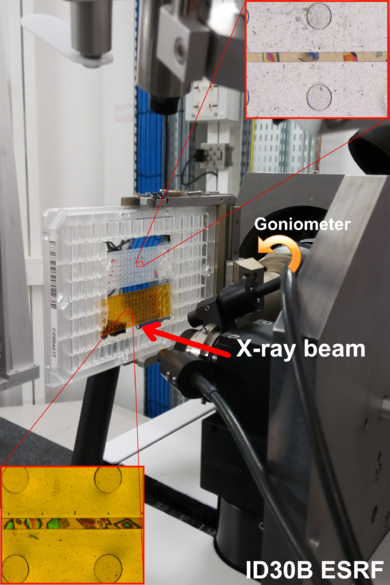Journal:Acta Cryst D:S2059798320008475
From Proteopedia
(Difference between revisions)

| Line 8: | Line 8: | ||
Furthermore, RT diffraction data can reveal motions crucial for catalysis, ligand binding, and allosteric regulation, not always accessible under standard cryogenic data collection.The chips are fabricated by a combination of either OSTEMER-Kapton or OSTEMER-Mylar materials, both produce a sufficiently low scattering background to permit atomic resolution diffraction data collection at room temperature. The proposed system can be easily incorporated into a fully automatized workflow at any synchrotron beamline facilitating the collection of users' data with no-intervention required of the end-user. | Furthermore, RT diffraction data can reveal motions crucial for catalysis, ligand binding, and allosteric regulation, not always accessible under standard cryogenic data collection.The chips are fabricated by a combination of either OSTEMER-Kapton or OSTEMER-Mylar materials, both produce a sufficiently low scattering background to permit atomic resolution diffraction data collection at room temperature. The proposed system can be easily incorporated into a fully automatized workflow at any synchrotron beamline facilitating the collection of users' data with no-intervention required of the end-user. | ||
| - | [[Image:Fig1aa.png|thumb| | + | [[Image:Fig1aa.png|thumb|390px|left|Setup mounted for diffraction experiments at the ID30B beamline of the ESRF with two microchips (Kapton and Mylar) hold in a standard crystallization microplate mount in the plate-gripper goniometer head. Insert are images of thaumatin crystals.]] |
<b>References</b><br> | <b>References</b><br> | ||
Revision as of 14:30, 30 June 2020
| |||||||||||
Proteopedia Page Contributors and Editors (what is this?)
This page complements a publication in scientific journals and is one of the Proteopedia's Interactive 3D Complement pages. For aditional details please see I3DC.

